This post may contain affiliate links. Please see our disclosure policy for more details.
As you transition from feeding a baby to feeding a toddler, here are some easy and healthy foods for your one year old. I’ve also included tips to help you navigate through this tricky phase.
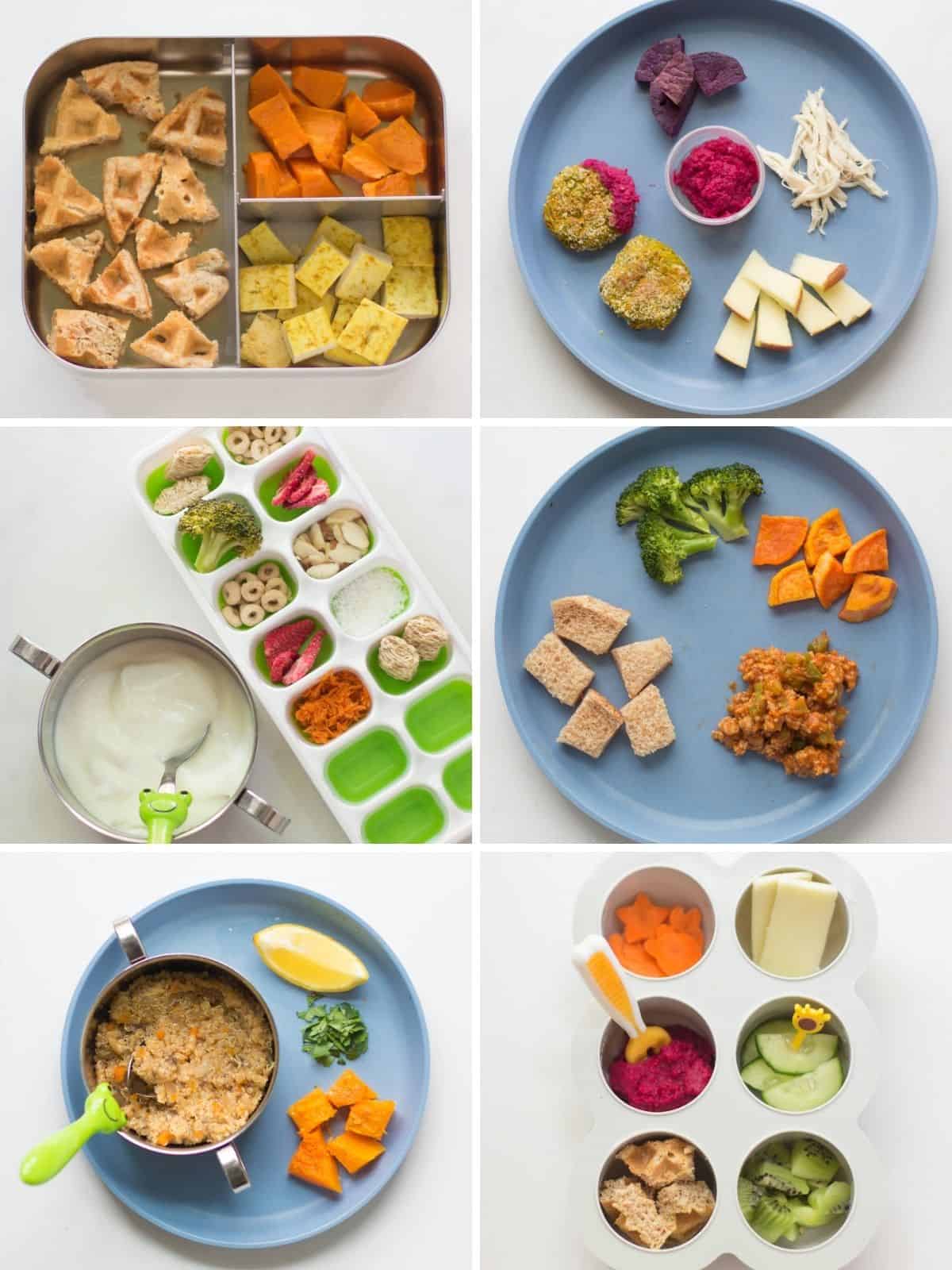
Table of Contents
Feeding a 1 year old
Perhaps your baby was an amazing eater and ate everything that was put in front of them. Then they turned into a toddler.
Feeding a one year old can be tricky for many reasons.
Growth rate slows down a lot compared to infancy when they triple their birthweight. And because they’re not growing as fast, you may notice a decrease in their appetite (or not!)
Your toddler is becoming their own person, and they love to test boundaries. Their favorite word may be “NO!” Their interest in food decreases as they just want to explore the world!
They are developing their food preferences, and appetite can be very erratic and unpredictable. One day they love a certain food but want nothing to do with it the next. They may be a bottomless pit one day and live on air the next.
I say all this to highlight that if you notice a change in your child’s eating, it is a NORMAL and expected part of development!
So don’t be quick to say that your child is turning into a picky eater, and please don’t feel like you failed or did something wrong.
The BEST thing you can do is to continue offering balanced meals and allow your child to decide what and how much to eat, even if it’s just one or two bites. And whatever you do, don’t pressure them! It will only backfire.
Here are some helpful resources to guide you through this stage:

Is your toddler becoming picky?
Arm yourself with these strategies that will transform your mealtimes!
How to build a one year old’s plate
While I say 1 year old, these meal ideas are also suitable for babies 10 months and up who have transitioned from purees to table foods and are chewing fairly well. It’s not like your baby turns one and you have to feed them differently from what you have been doing.
On the other hand, if your child is over 9 months old and struggling to move beyond purees, join my email series that will guide you through this essential transition.
Here’s a formula for building a balanced meal:
Protein/Fat + Complex carb (e.g. whole grains, beans, lentils, starchy vegetables) + Fruit and/or Vegetable
- Specific examples of foods for each of these components can be found in this master list of finger foods.
- Follow this formula every time to ensure that your child is getting exposed to a variety of foods and nutrition.
- And this is VERY important – Do make sure to serve at least one food that your child likes most of the time.
Breakfast Ideas for 10 Months and Up
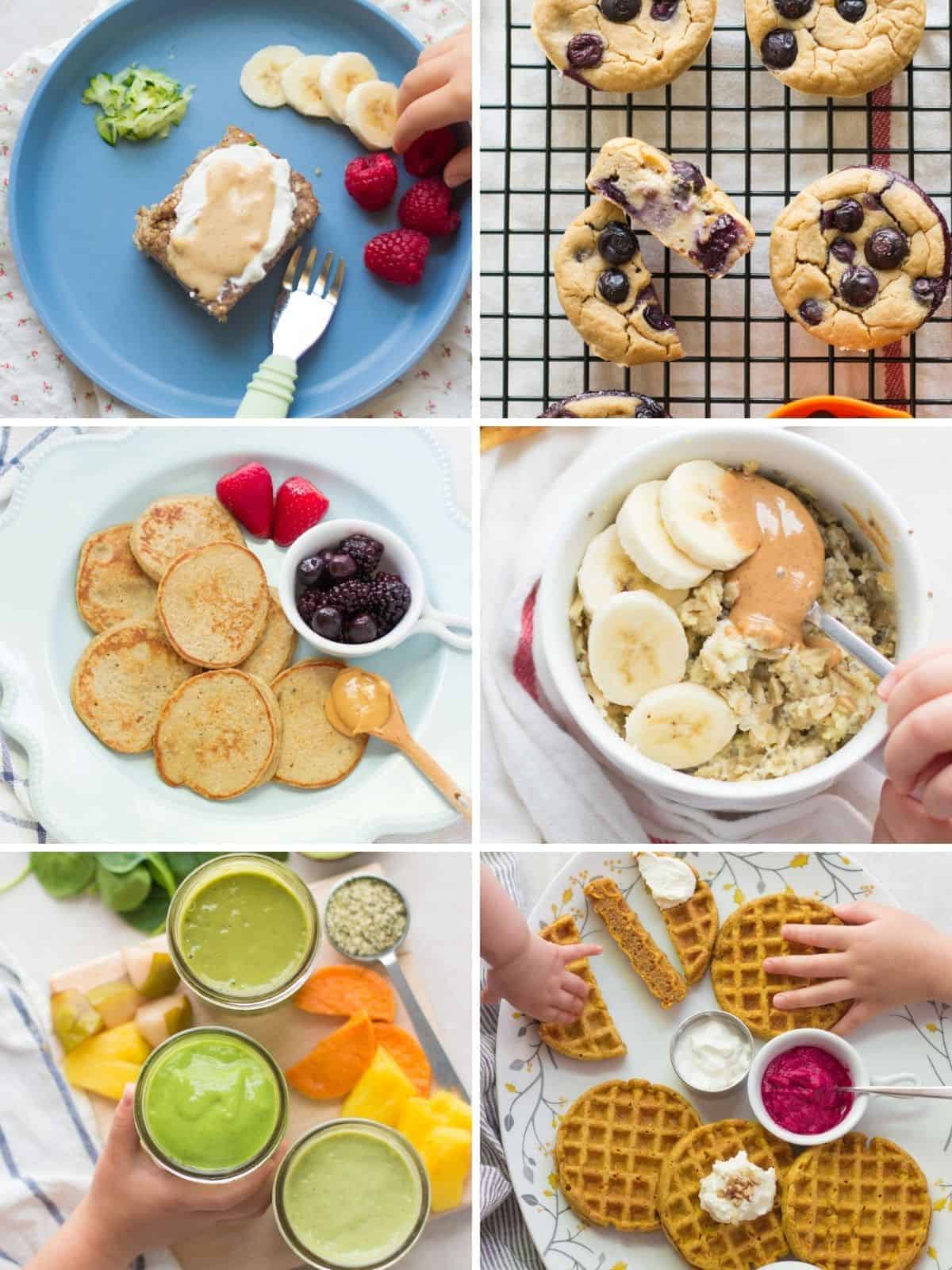
If you find yourself in a breakfast rut, you are so NOT alone! And there’s nothing wrong with serving the same meal day in and day out if it means you get to preserve your sanity.
But if you are looking for quick and EASY ways to incorporate variety into your child’s diet, these breakfast ideas are for you!
Lunch Ideas for 10 Months and up
Here is some inspiration to help you build your list of easy, go-to meals that are yummy and healthy. Be sure to take into consideration your child’s appetite, chewing abilities, food preferences, and allergies.
While cutting food into bite-sized pieces certainly makes it easier for your little one to eat, I encourage you to offer larger pieces of food as well. This will help your child learn to take bites.
Snack Tray Lunch
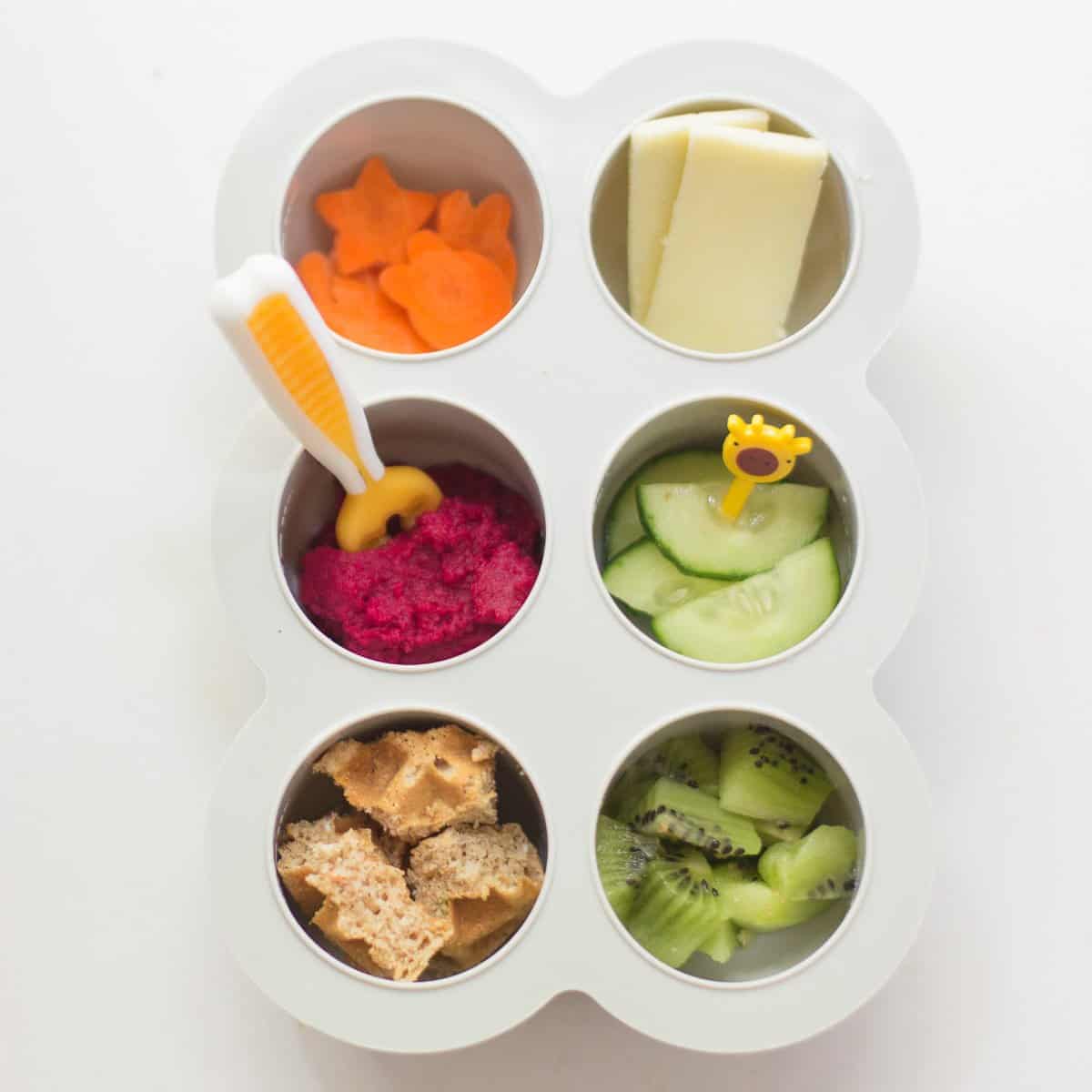
There is no need to cook anything and you can get a well-balanced meal on the table in 5 minutes!
Check out my Ultimate Snack Tray Ideas for tons of ideas!
Savory French Toast (with veggies)
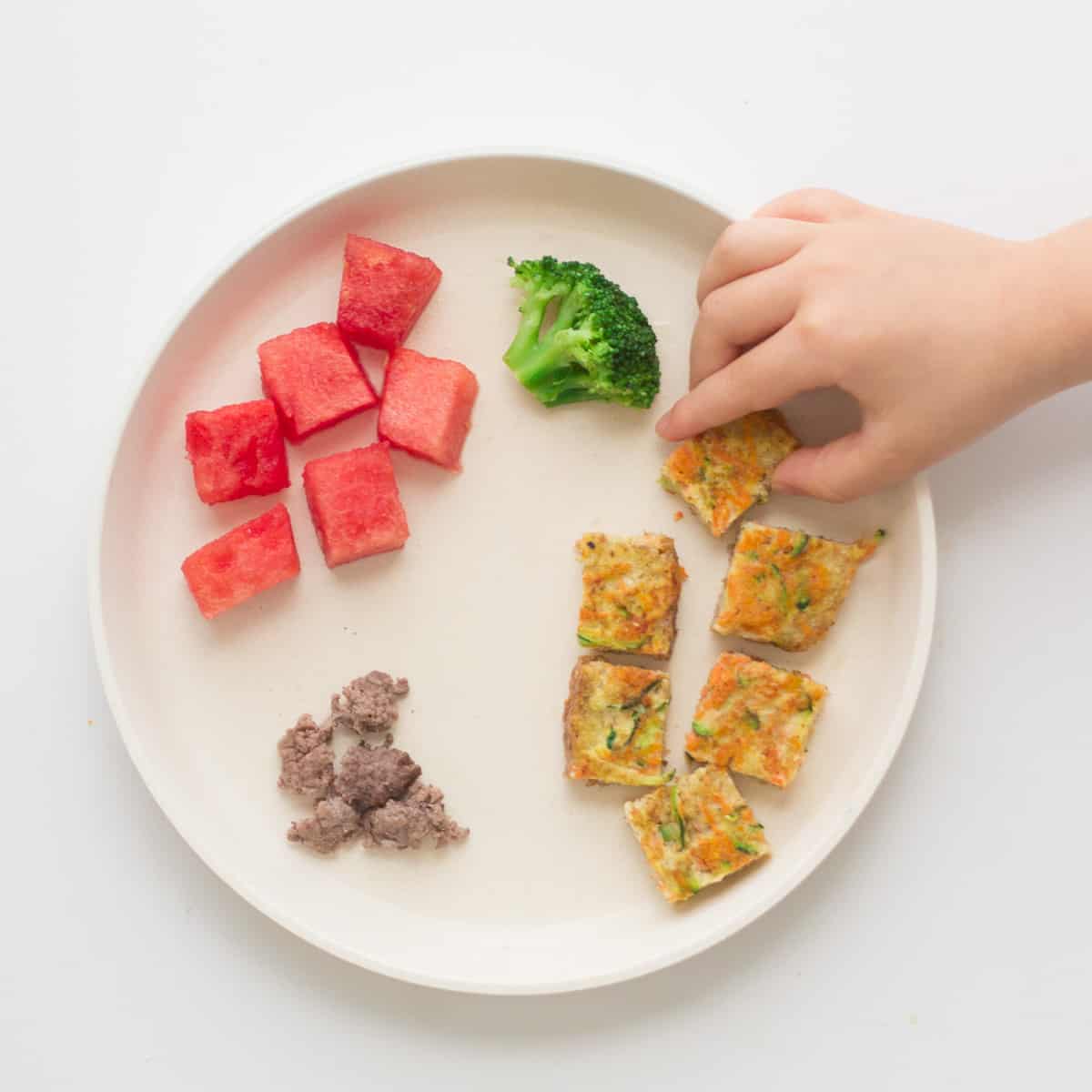
Add vegetables to a classic kid-favorite breakfast! This savory vegetable French toast or eggy bread is an EASY and fun way to use up leftovers!
Tip: Don’t stop serving those foods that your child won’t eat or else they will never learn to like them. Instead, serve a small portion (even just one piece) WITH foods that they do enjoy. Even if they don’t eat it, just seeing counts as exposure.
For example, this plate was from when my son was learning to enjoy meat and broccoli.
Pizza
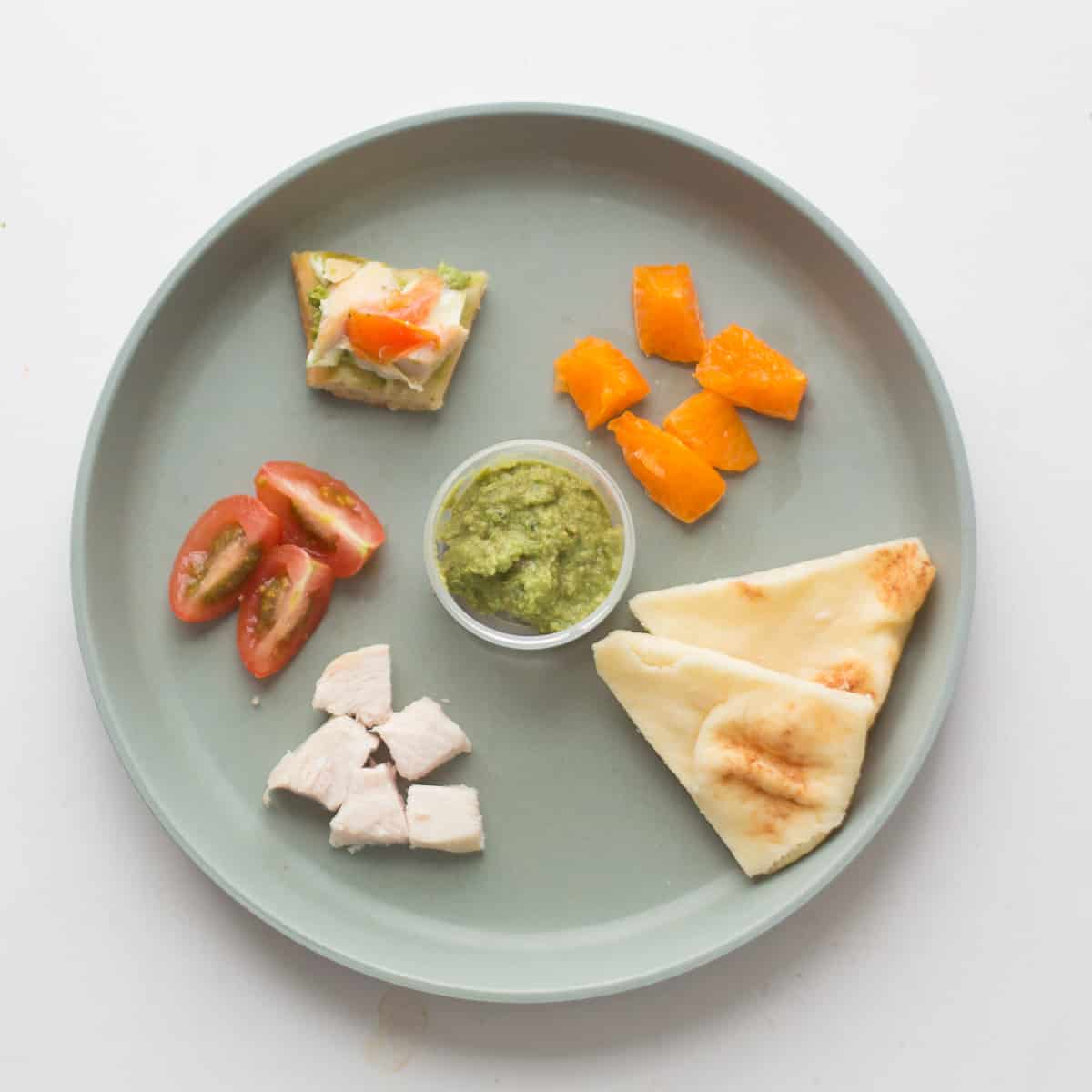
If your child is learning to accept mixed foods, try serving it deconstructed along with a small piece of cooked flatbread pizza (top left) for exposure.
Recipe: Chicken Pesto Flatbread Pizza
Veggie Nuggets
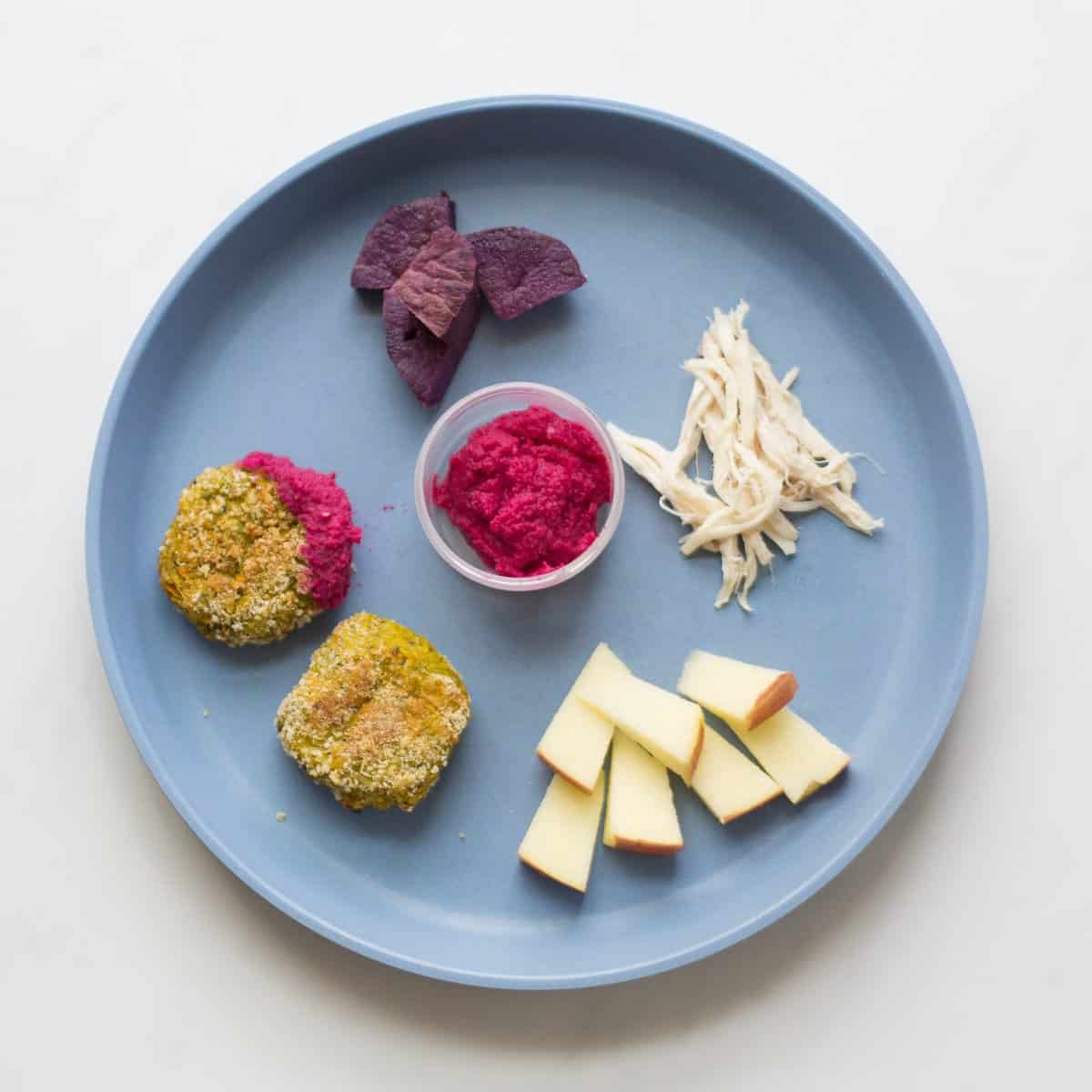
Kids love finger foods and dips. If you have a picky eater, these baked veggie nuggets just may get them to gobble up their vegetables.
Pictured: beet hummus, purple sweet potatoes, shredded chicken, apple
Hummus grilled cheese sandwich
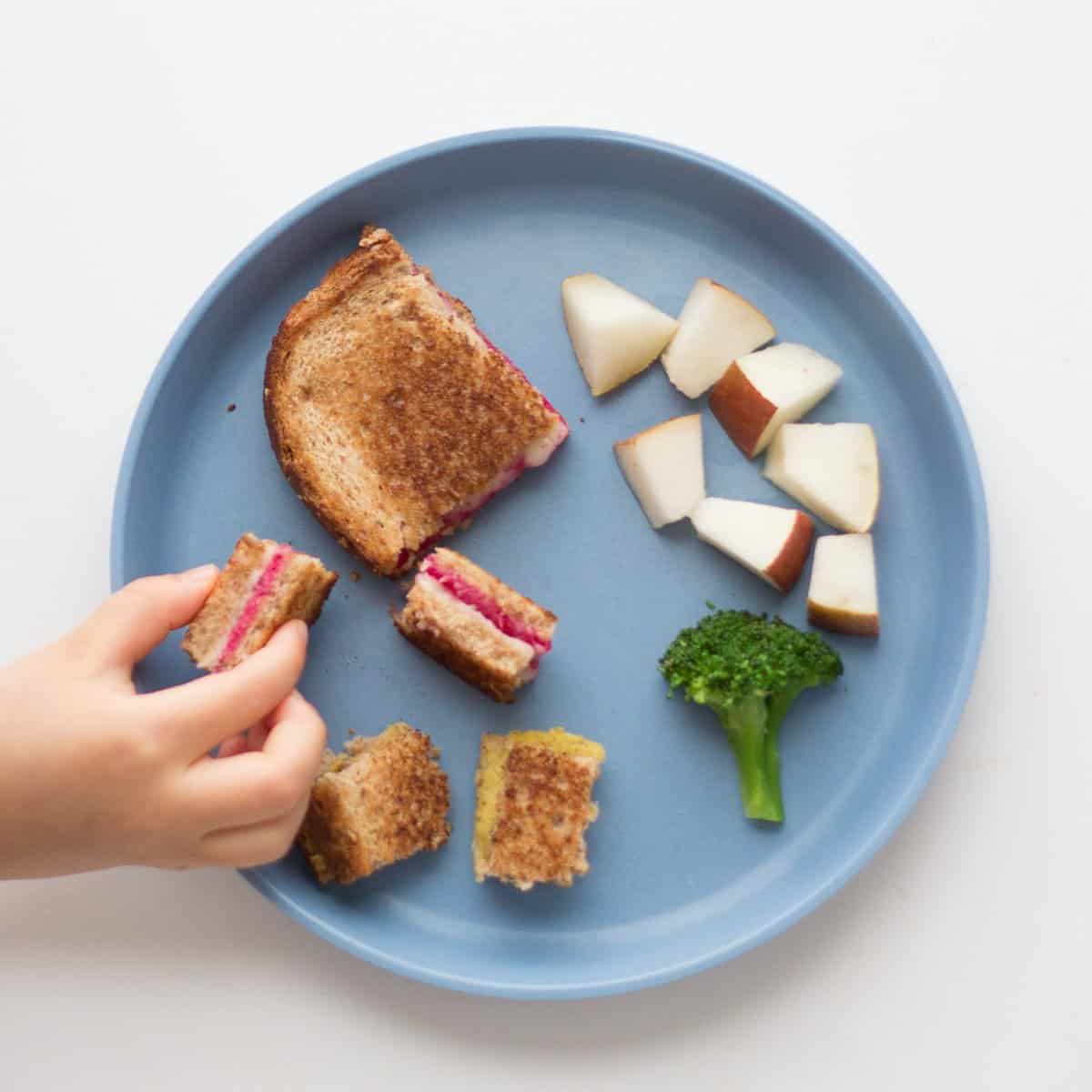
Spread your favorite hummus on bread, add some cheese and voila! Hummus grilled cheese! I have included some veggie-forward hummus recipes to try as well as step-by-step instructions and cooking tips.
Also, be sure to check out this master list of sandwich ides!
Waffles
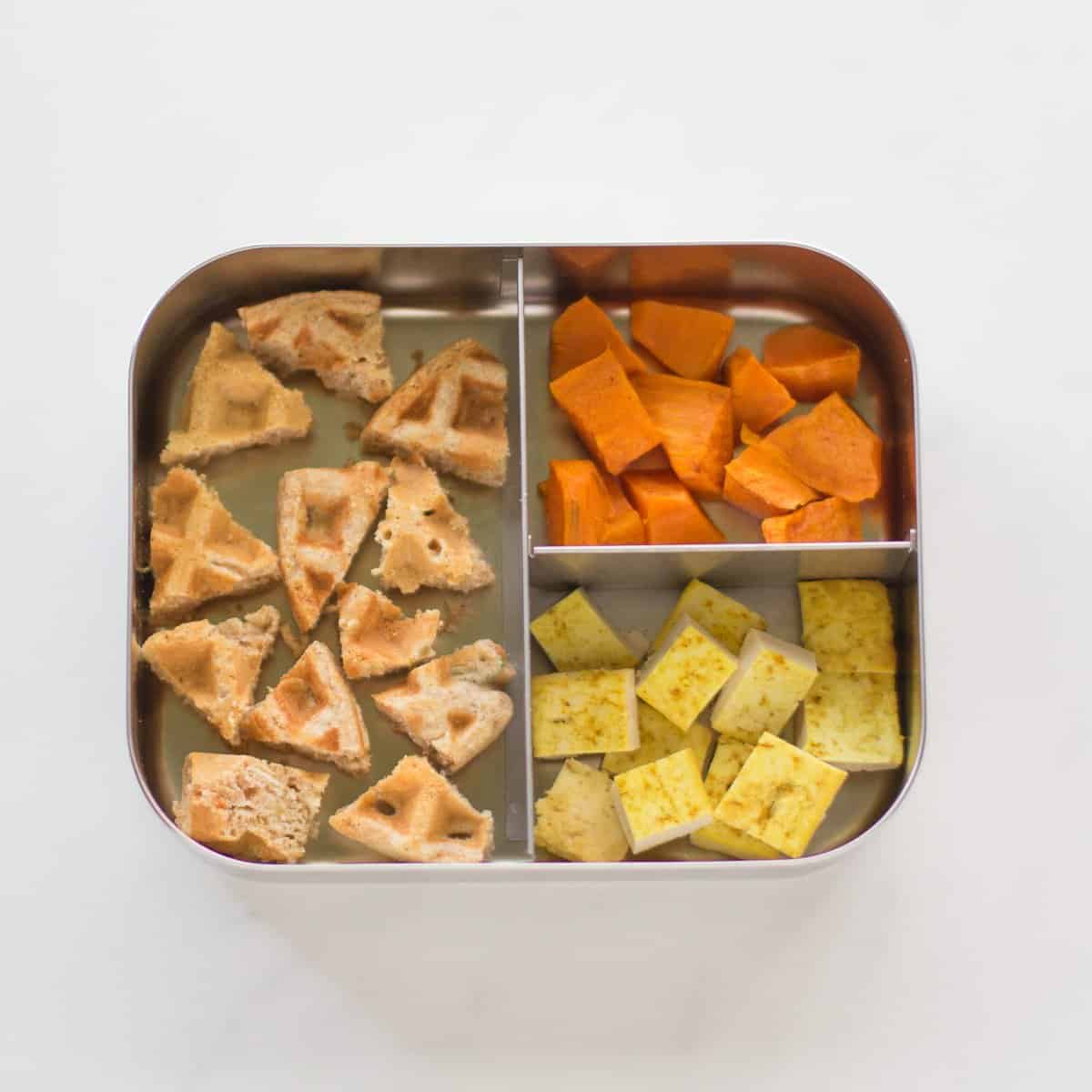
I love developing veggie-loaded recipes, and if you’ve never added veggies to your waffles, now is the time!
Pictured: Vegetable waffles with tofu and sweet potatoes.
Also try these highly customizable mini waffles.
Breakfast for dinner
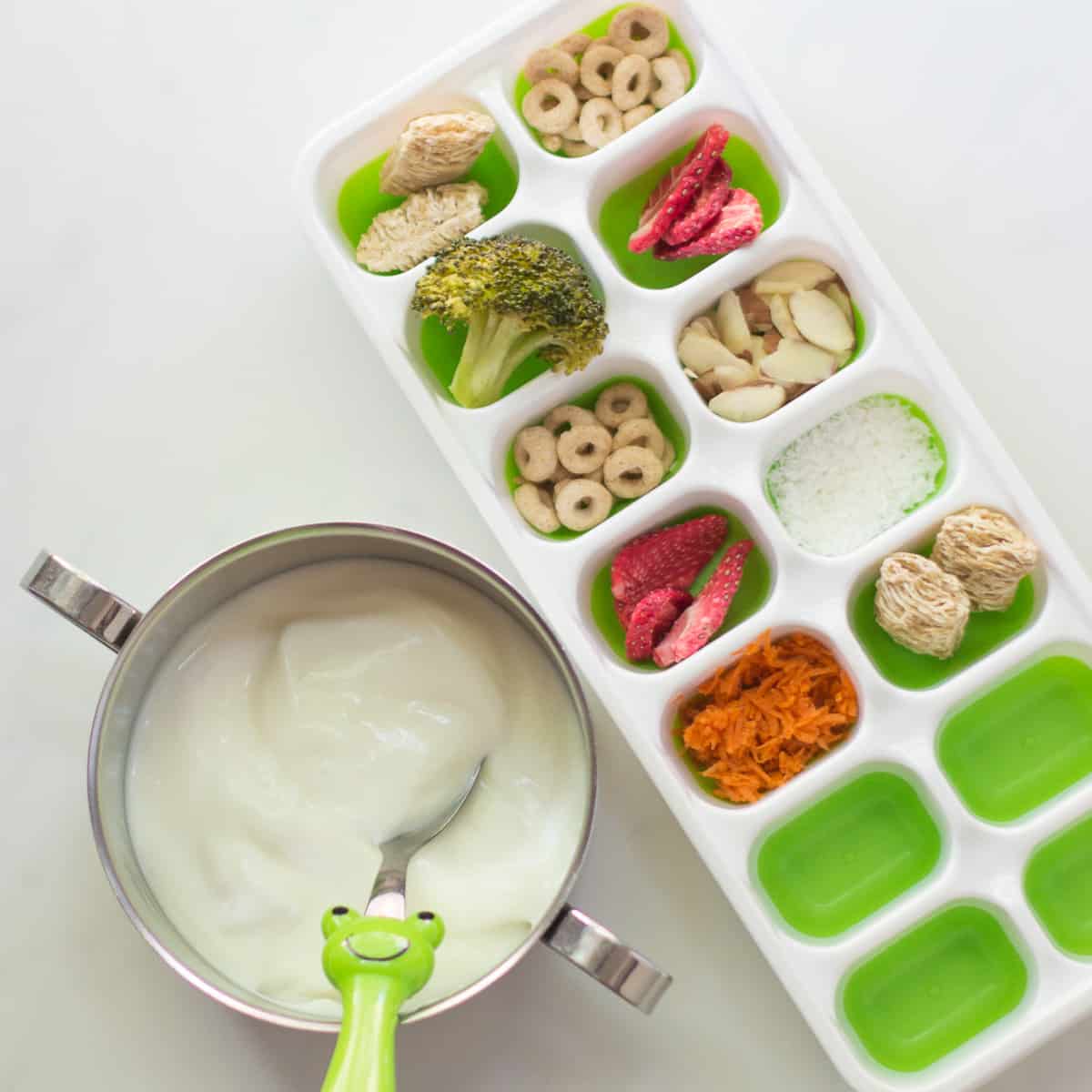
Simply changing the way you plate your child’s food can invite more fun and encourage your perhaps fussy or picky eater to try a greater variety of foods without much effort on your part!
Zuccchini and Corn Fritters
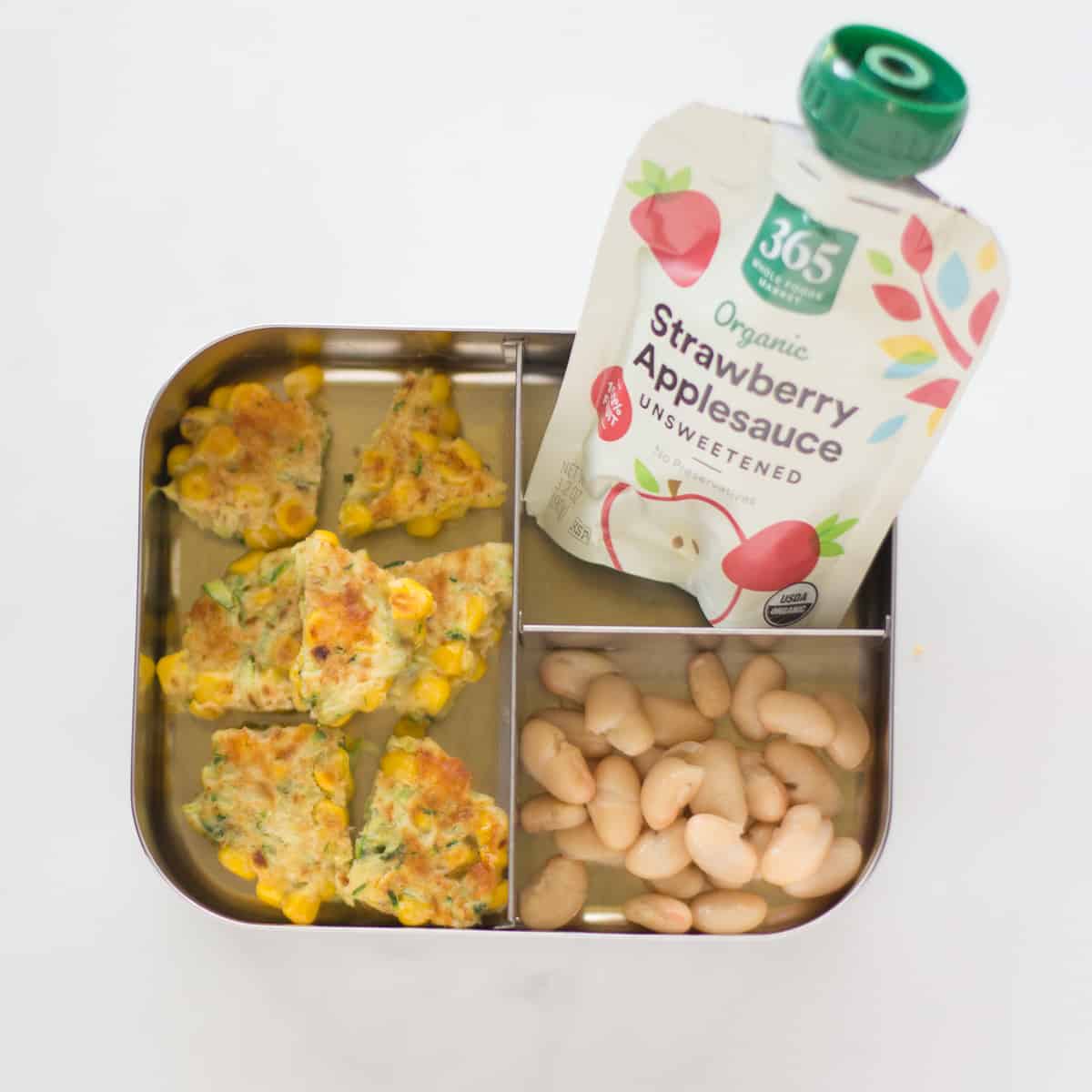
While they won’t be crispy once refrigerated, these zucchini corn fritters taste delicious cold and make for an easy make-ahead lunch.
Muffins
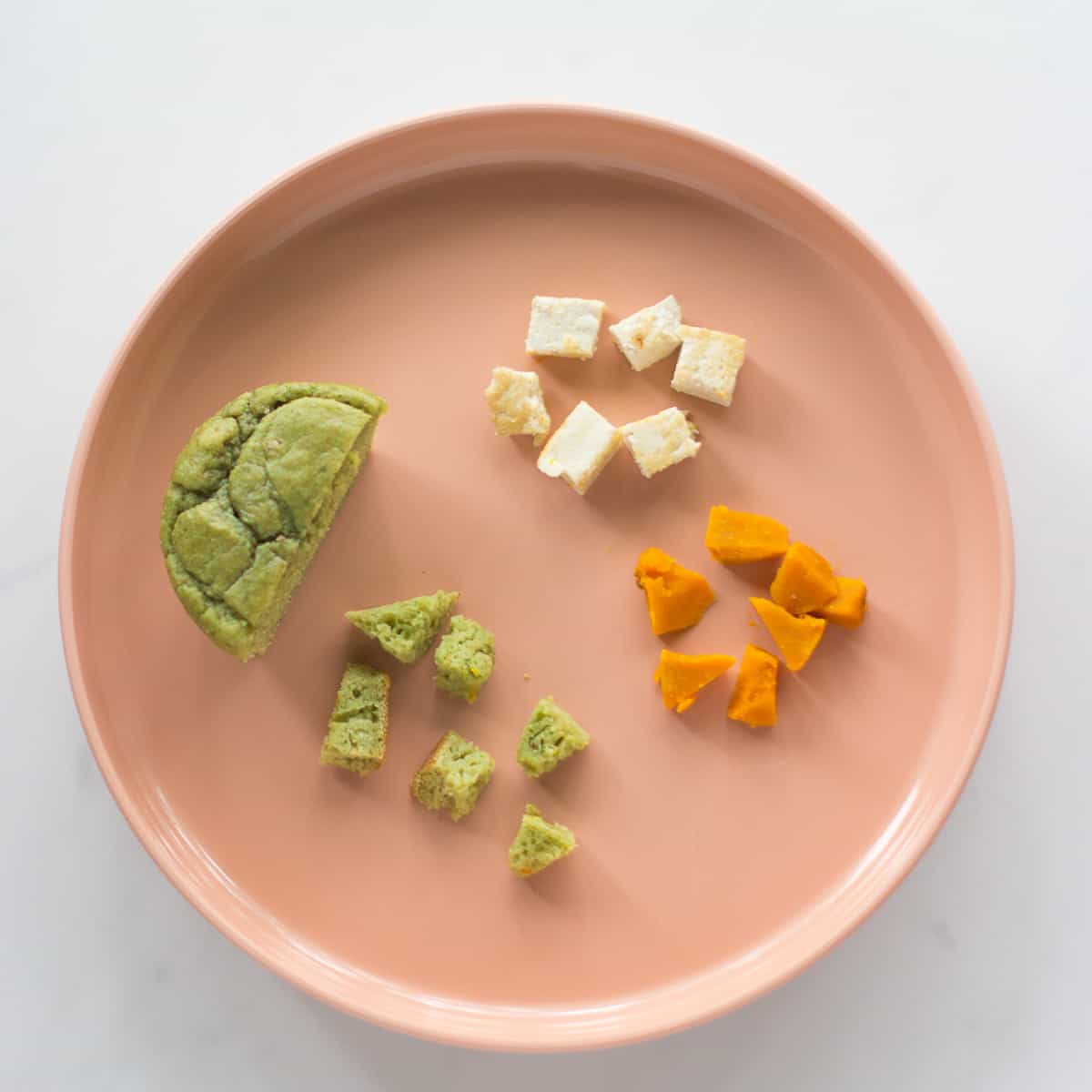
Muffins are another fabulous make-ahead option! All of my baked goods recipes are freezer-friendly so all you have to do is reheat.
These spinach muffins are super fluffy and moist and packed with nutrition.
For more ideas:
Easy toddler lunch ideas that you can enjoy at home or pack for preschool
Snack Ideas for One Year Olds
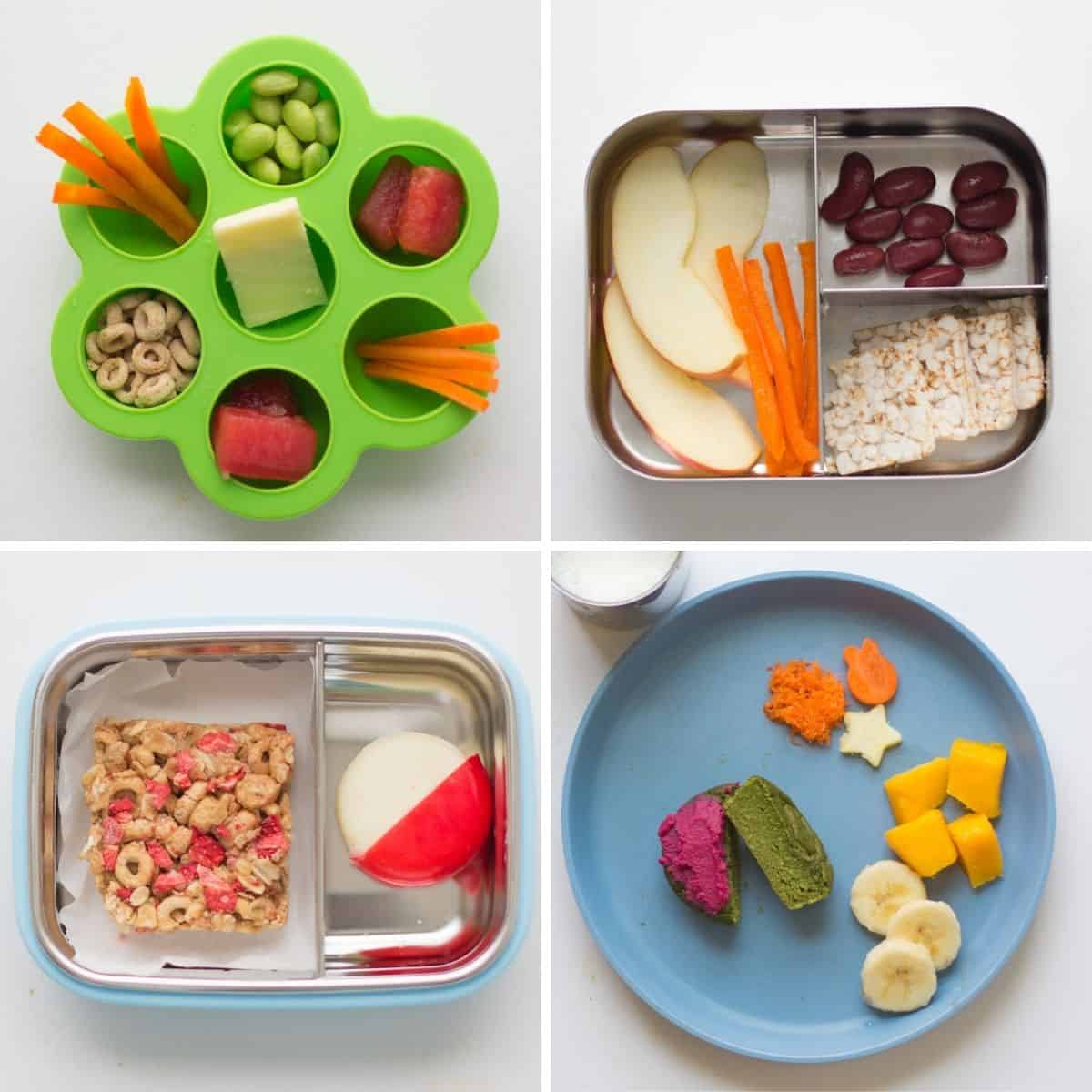
Before one, babies do not need snacks. 3 meals and breastmilk/formula is enough.
Once they turn one, You will need to plan on feeding them every 2-3 hours. While most kids need about 2 snacks per day, yours may need just one. Or perhaps none.
My daughter is currently 21 months old and doesn’t care much for snacks. She brings her appetite for meals. She’s happy and growing. All this to say, follow your child’s lead on how many snacks they need, if any at all.
Healthy Snack Ideas for Toddlers
Dinner Ideas for 10 Months and Up
Say no more to cooking separately for your little one with these family meals!
Meatballs
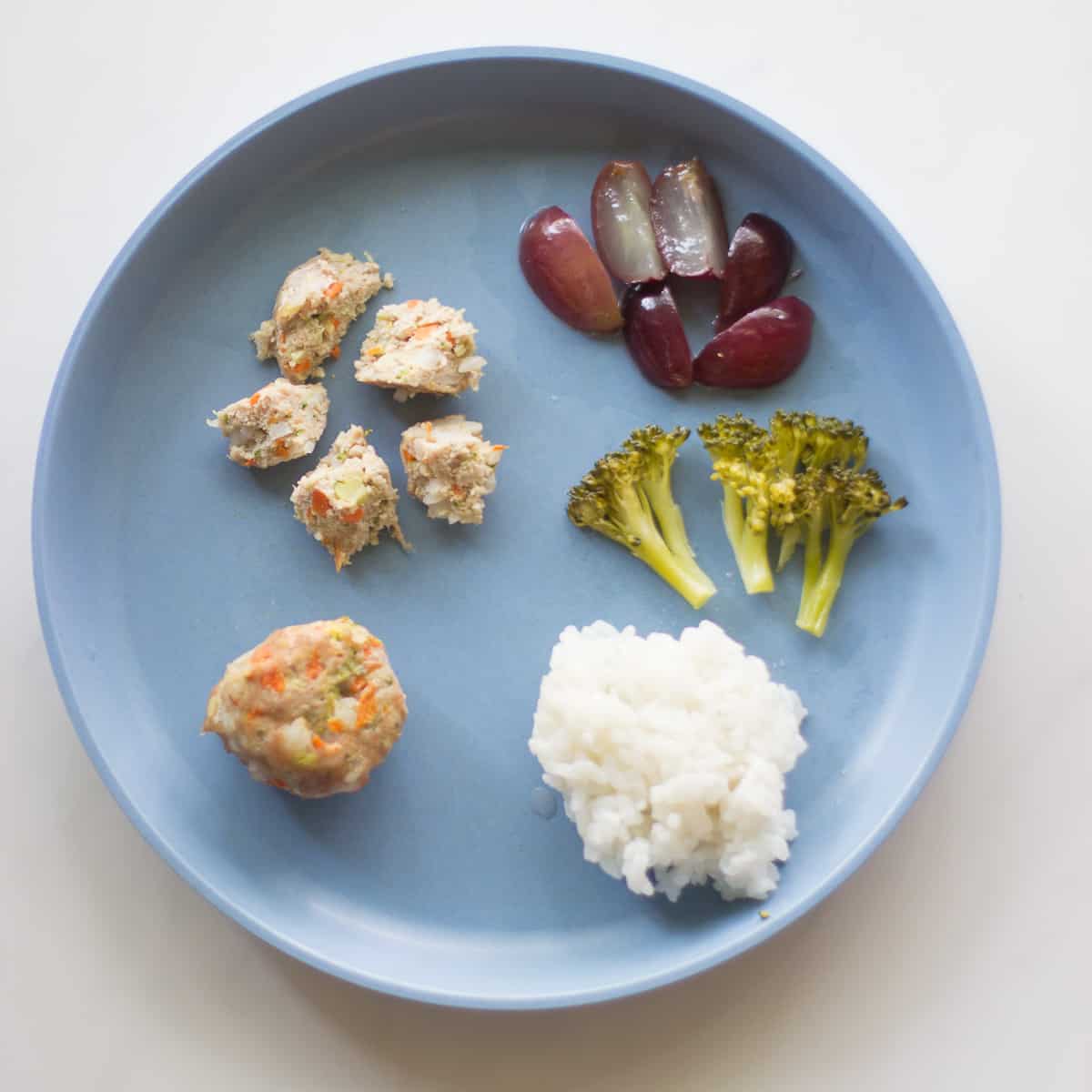
If your meatballs turn out dry and tough more often than not, you need to try these tips and this turkey meatball recipe!
15 Minute Creamy Broccoli Pasta
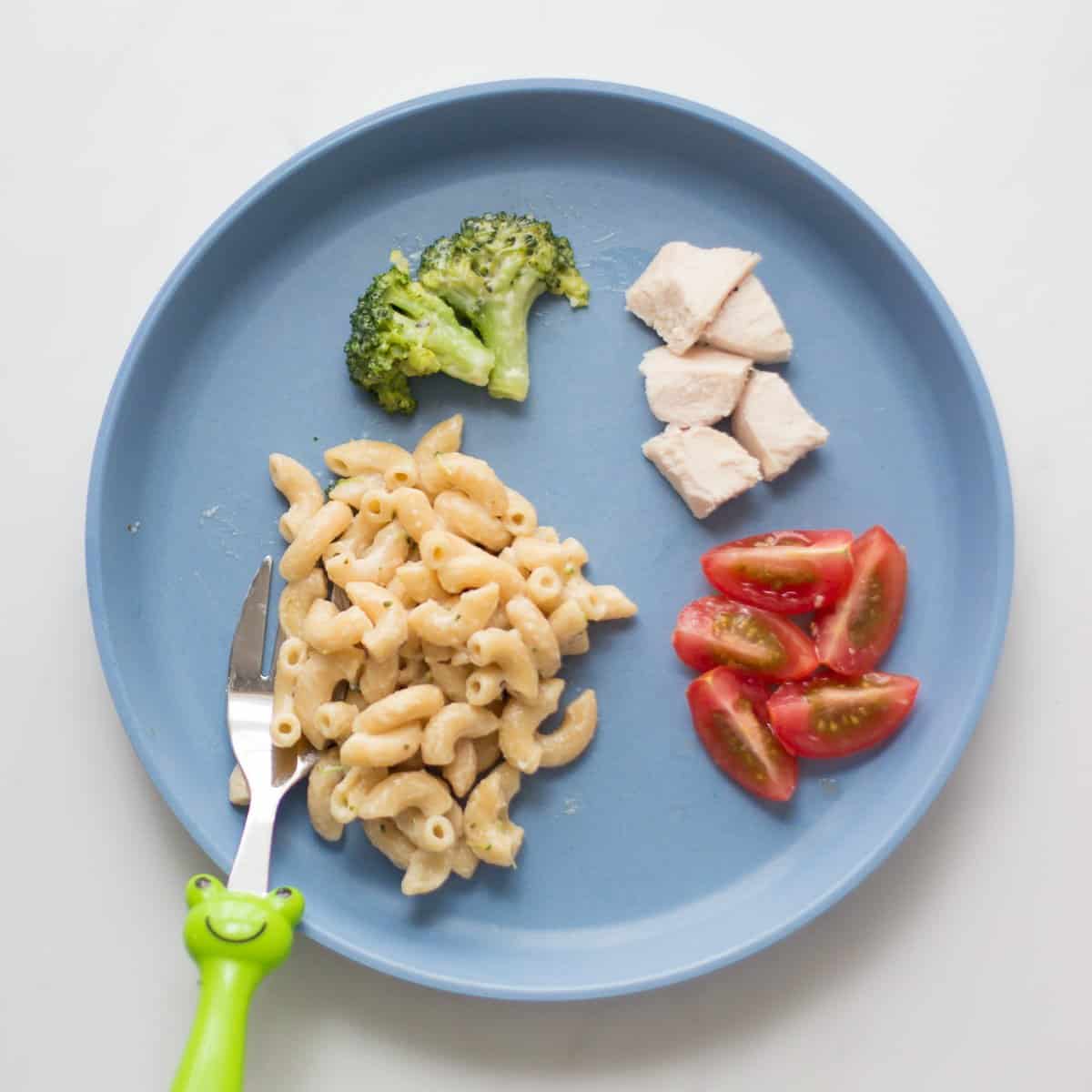
Your child doesn’t like broccoli or doesn’t like foods touching each other? You can separate the broccoli from the pasta.
Recipe: 15 Minutes One Pot Creamy Broccoli Pasta
Sloppy Joes
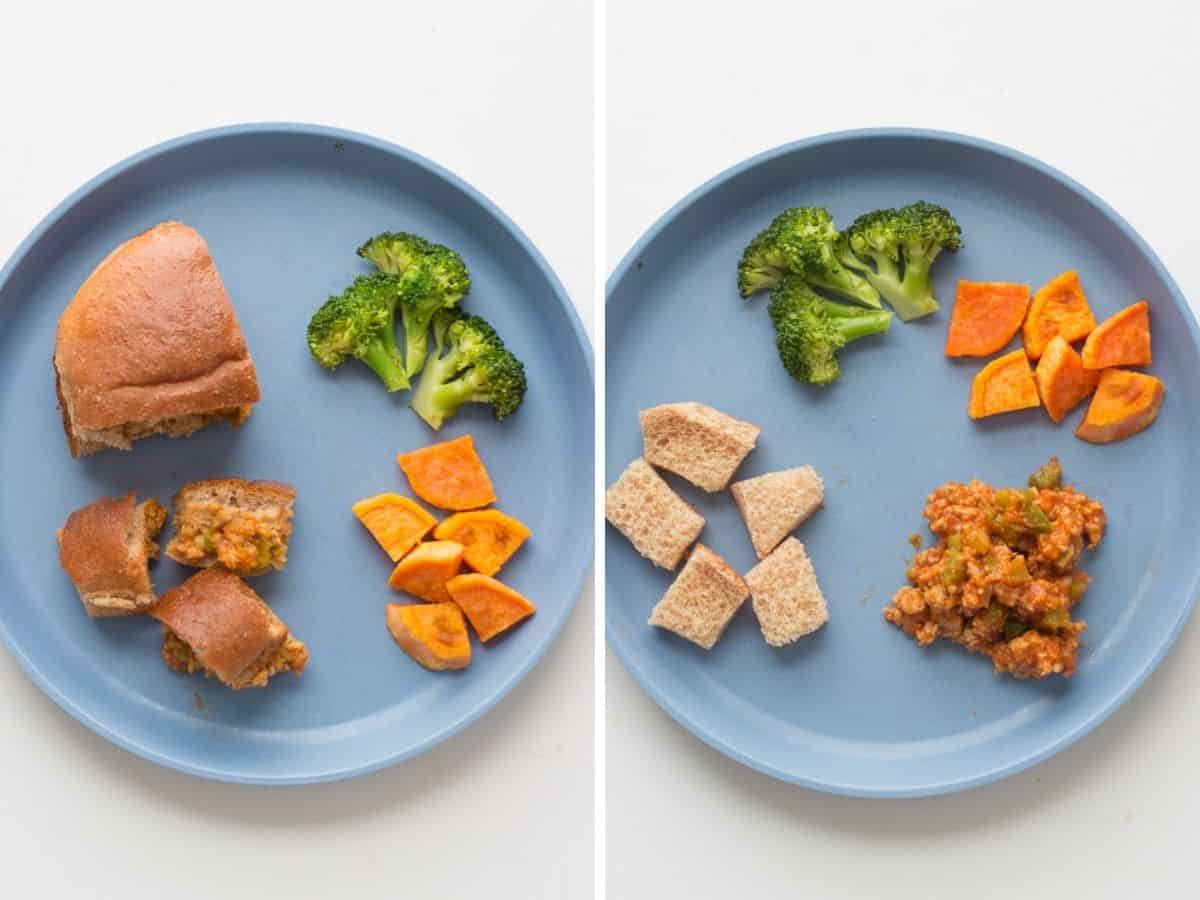
Cut into smaller, more manageable pieces if your child has a difficult time biting into burgers (or sandwiches). But do continue offering larger pieces for exposure and practice.
And again, if your child is not a fan of foods touching, try serving it deconstructed.
Recipe: Healthy Sloppy Joes
Mushroom Quinoa Risotto
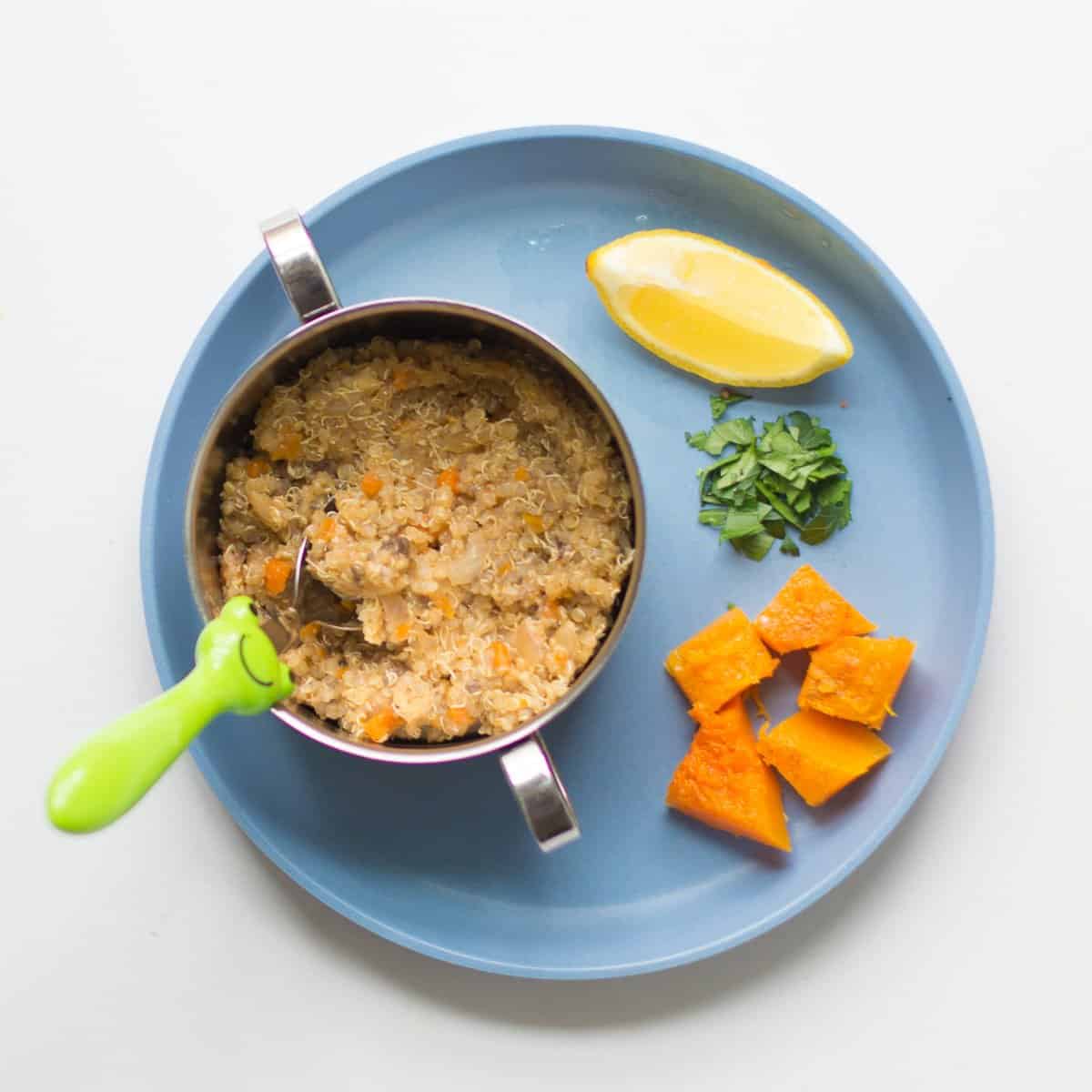
This 30 minute mushroom quinotto or quinoa risotto is much easier to make compared to traditional risotto and requires zero stirring! Its thick consistency is perfect for spoon practice.
Served with butternut squash
Tip: Encourage your child to sprinkle the parsley and squeeze the lemon into their bowl by modeling!
Chicken quinoa casserole
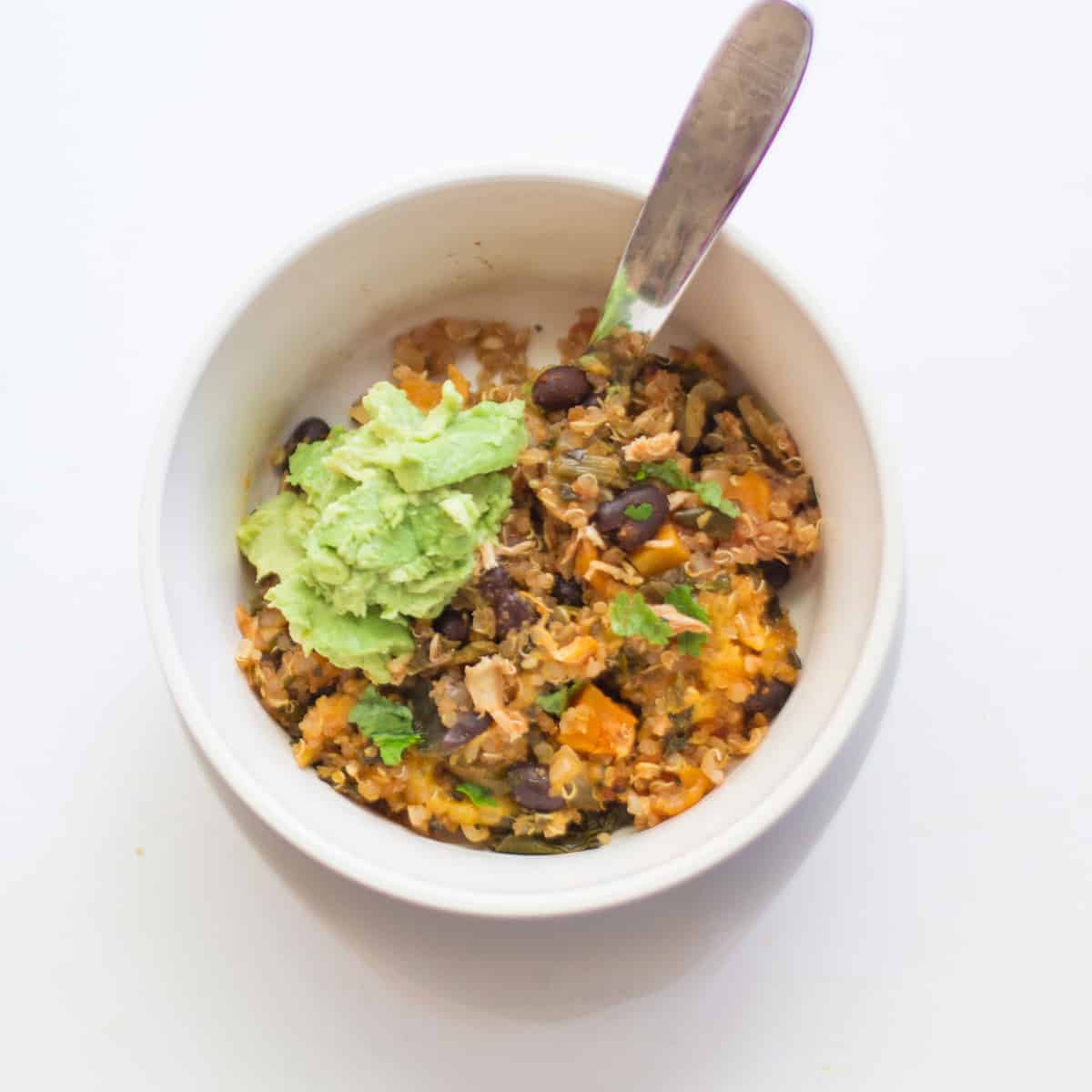
With a little prep work beforehand, this quinoa casserole comes together so easily!
Beef Fajitas
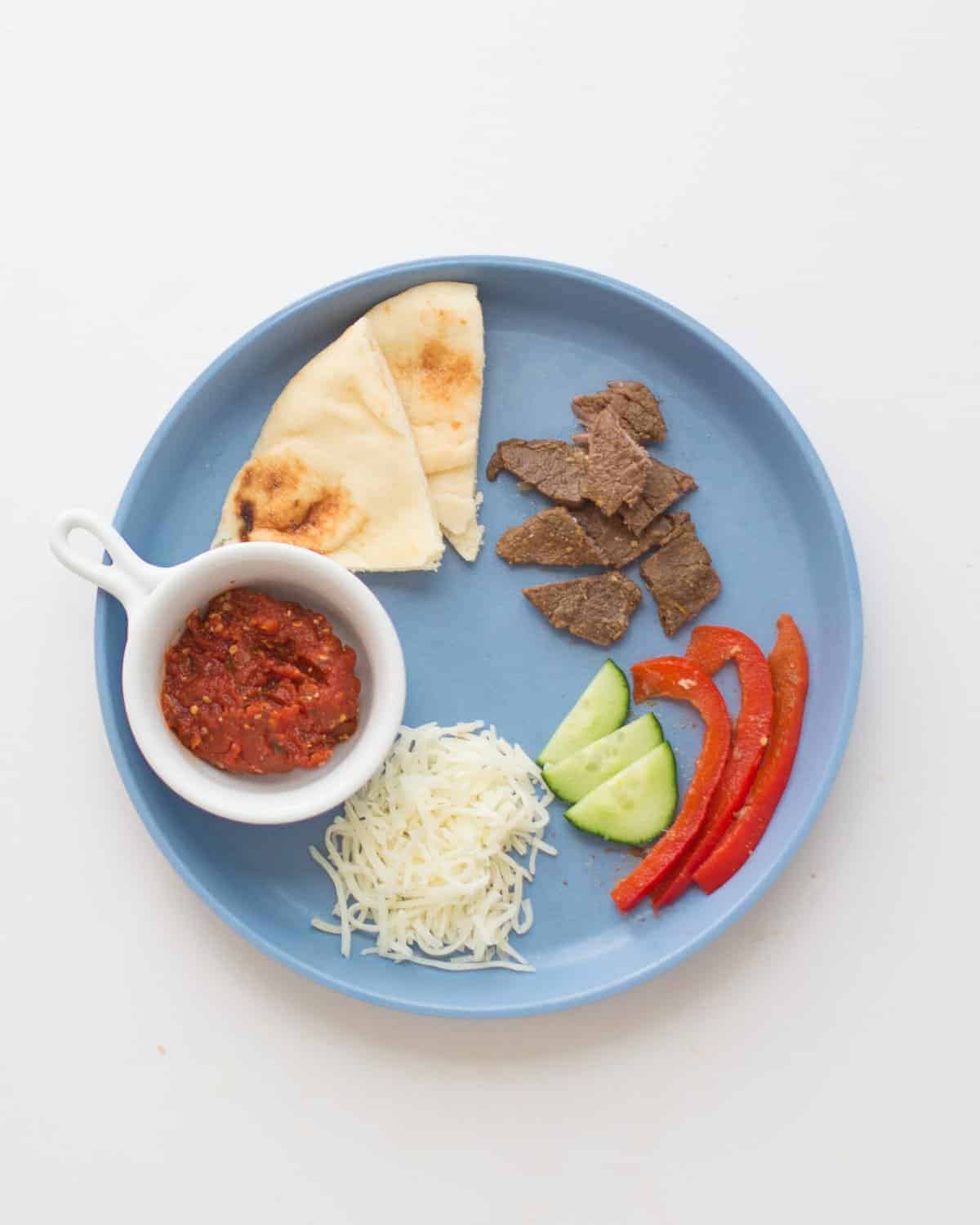
I’m showing a lot of deconstructed meal ideas because they are a great way to expose your toddler to a variety of foods while supporting their desire for independence and control.
If your child doesn’t have any issues with mixed foods, then yay! It makes your job much easier. This is why I encourage you to serve mixed foods early on and often.
Recipe: Pressure Cooker Steak Fajitas
More Dinner Ideas for Toddlers
Food Menu for 1 Year Old Baby
Here is a sample one day meal plan that includes 3 meals and 2 snacks. Remember you don’t HAVE to offer 2 snacks. Always follow your perfectly unique child’s lead.
- 7 am – Breakfast: 2 minute oatmeal with fruit and milk
- 9:30am – Snack: Sweet potato cakes with peanut/nut/seed butter
- 11:30am – Lunch: Beetroot pesto pasta with broccoli and tofu
- 2:30pm – Snack: Dry cereal + cheese
- 5:30pm – Dinner: Hamburger Helper + milk
Milk for 1 Year Old
The American Academy of Pediatrics recommends 16-24 ounces per day.
It is best to serve the milk WITH the meals. Milk is filling and so if offered throughout the day, it can sabotage their appetite and lead to grazing and not eating their meals.
As you transition from breastmilk and/or formula, start by offering a small amount for your child to get used to the taste and to limit waste.
Also, if your child doesn’t like milk, that’s OK! Milk is a convenient way to provide the key nutrients that they need. However, as long as your child is getting the adequate amounts of protein, fat, calcium, and vitamin D through food, it’s not required.
Here’s a deep dive on the best milk for toddlers, including non-dairy options.
I also want to add that if you are breastfeeding and want to continue, do it!! Yes food takes priority BUT breastmilk still provides nutrition and protection against disease.
Frequently Asked Questions
At 1 year of age, solid foods are now the main source of energy and nutrition.
The American Academy of Pediatrics recommends that your baby consume around 1000 calories each day, and half of the calories should come from healthy fats.
And while there is a recommended serving size for toddlers, it is completely up to your child to decide how much and if they are going to eat. It is NOT your job to “get” your child to eat. Your job is to offer a variety of foods and set a predictable and consistent mealtime routine.
It is very normal for their appetite to fluctuate, so consider their food intake over the course of a week rather than by each meal or day, even.
To minimize mess and to make the meal less intimidating, start with small portions and offer more if your child asks.
If your baby is growing, following their unique growth curve, and happy, they are eating the amount of food that’s RIGHT for them, even if it’s less or more than the recommendations or what you think they need to be eating
All of the choking hazards that you avoided as a baby continue to apply. Some foods can be modified to be safe while some need to be avoided completely until age 4.
Whole nuts and seeds – finely grind
Nut butter – thin it out
Chunks of cheese – grate or cut into small pieces
Big chunks of raw/hard fruits and vegetables – thinly slice or grate
Round foods (e.g. cherry tomatoes, grapes) – quarter
Stick and hard foods (e.g. candy and gum)
Popcorn
Hot dogs – cut lengthwise and into small pieces
And make sure they are sitting down when eating. They should never be running, walking, playing, or lying down while eating.
Also try to avoid added sugars as much as possible until age 2.
I hope this post was helpful, and I’d love to hear your thoughts! Let me know by commenting below!

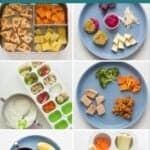


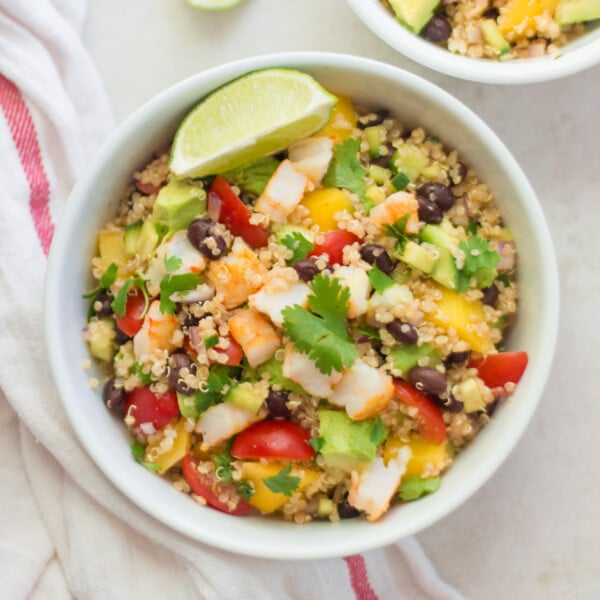










Thank you. Thank you for making me feel not so alone and that I’m not doing anything wrong now that my son (13M) has completely changed his eating habits. This entire article is exactly what I’ve been needing.
Hi Jenna! I’m so glad you found this article to be so helpful. You are most definitely NOT alone! Sending much love and support!
Hi! For your formula: protein/fat + complex carb + fruit/veggie, can one food serve as two groups? For a example, if I serve lentils, does that satisfy the protein and the complex carb?
Yup! Many foods will fall into more than one category (e.g. avocado will count as fruit and fat, sweet potatoes as carb and veggie) so you don’t need to stress too much about this. I highly encourage you to incorporate some type of protein or fat source at every meal for staying power